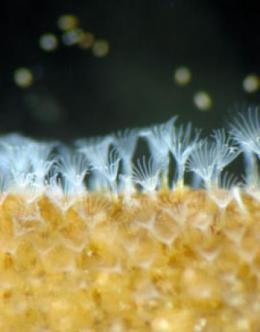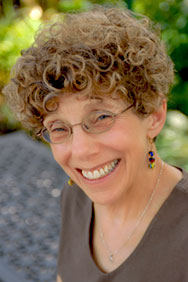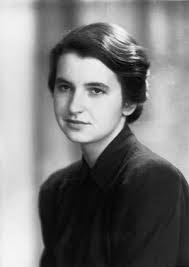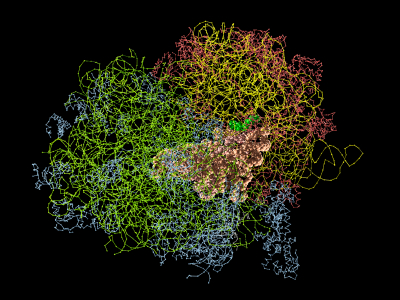How Can Actual Animals Be So Tiny?
 March 22, 2011
March 22, 2011 
Bryozoans are animals so tiny you almost can’t see them at all. They were first discovered In the 1500’s, when microscopes became a popular novelty for people who could afford them.
Those early microscope hobbyists gathered samples of fluids and tissues and examined them out of pure curiosity. In drops of sea water, or on stones or seaweed gathered from sea water, they found infinitesimal, delicate, plant-like organisms. The early microscopists thought these were plants. But as the centuries passed, and microscopes and microscope techniques improved, investigators found that these organisms were animals, with nervous systems, muscles, and digestive systems.
The Bryozoans are similar in size and habitat to corals, but they are quite different. Corals are more primitive: they have nerve nets instead of nervous systems, and contain only a simple digestive cavity with a single opening to take in food and give off waste.
Now researcher Judith Fuchs, at the University of Gothenburg, has been able to study a large group of Bryozoans using DNA data. She has discovered that these animals come from a common ancestor, even though some species live in salt water and some in fresh water.
To me, the Bryozoans are just mind-boggling: Imagine packing all those animal systems into a creature too small to really see with the naked eye. Imagine their tremendous variety of shapes, all of which evolved to enhance feeding, reproduction, survival. Imagine the discovery and clarification of this whole animal group paralleling the development of biological technology, from early through advanced microscopy, from early to advanced genetics.
And there’s more. Stay tuned…
 Bryozoa,
Bryozoa,  DNA,
DNA,  microscope
microscope 


